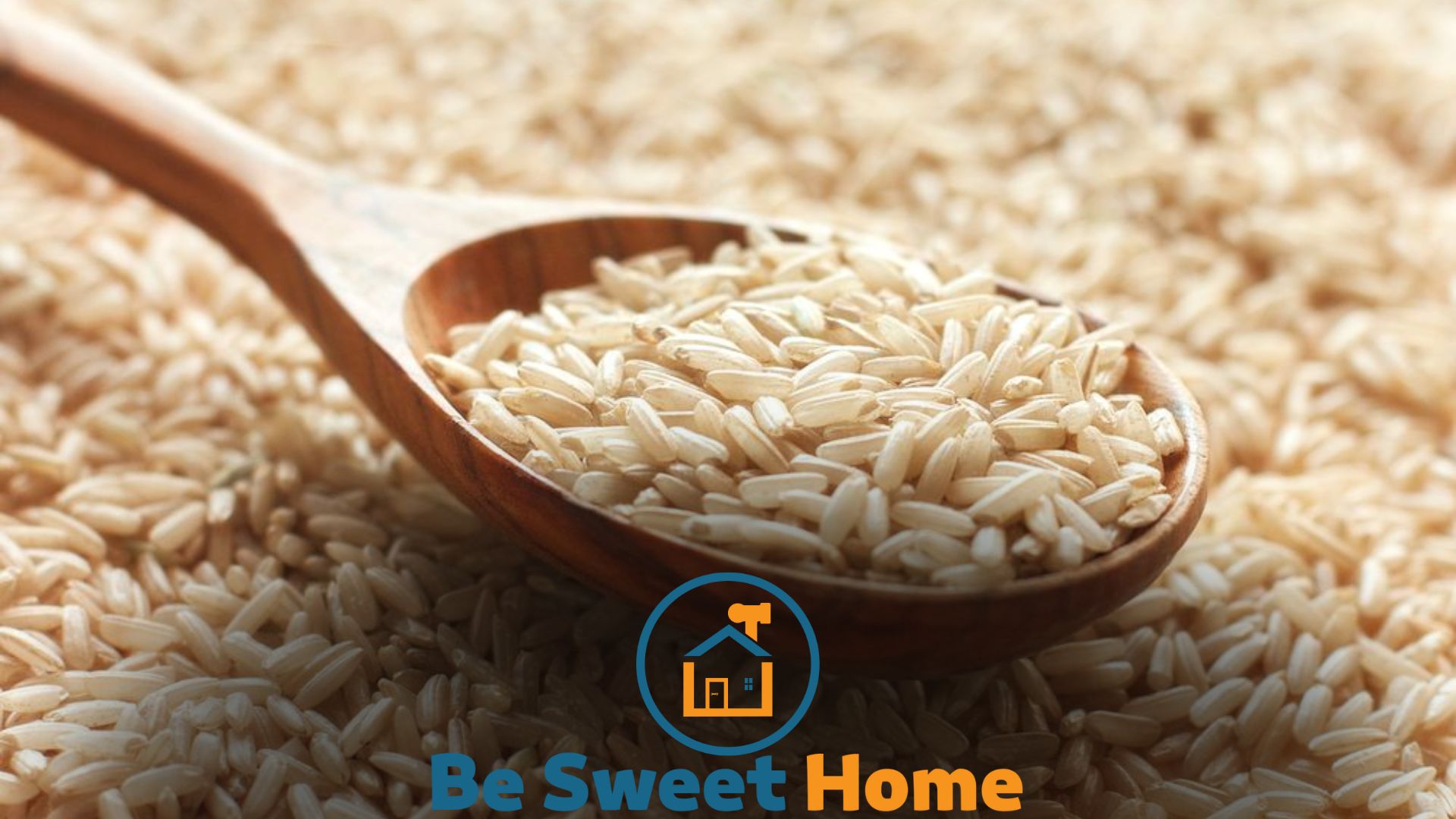

Brown rice offers numerous health benefits, such as improved digestion and blood sugar control. Packed with nutrients, this whole grain can aid in weight management and reduce the risk of chronic diseases.
Brown rice is a whole grain that retains the bran and germ layers, unlike white rice, which undergoes heavy processing and loses many nutrients.
This nutritious grain is an excellent source of dietary fiber, vitamins, minerals, and essential antioxidants.
Studies have shown that regular consumption of brown rice can help regulate blood sugar levels, promoting better diabetes management and reducing the risk of type 2 diabetes.
Furthermore, the fiber content in brown rice aids in digestion and can prevent digestive disorders like constipation and bloating. With its low glycemic index, brown rice is also beneficial for weight management as it keeps you feeling fuller for longer.
Incorporating brown rice into your diet can be a simple and effective way to enhance your overall health and well-being.
Unveiling Brown Rice Nutrition
Brown rice, often praised for its nutty flavor and chewy texture, makes for a satisfying meal and offers various health benefits.
Bursting with essential nutrients, brown rice is a powerhouse of nutrition that can support your overall well-being.
In this post, we will delve into the nutrition profile of brown rice, shedding light on its high fiber content, antioxidant properties, and abundance of minerals and vitamins.
High Fiber Content and Its Importance
Brown rice is a remarkable source of dietary fiber, providing numerous health benefits. With its bran intact, this unrefined grain offers significantly higher fiber content than its polished white counterpart.
A cup of cooked brown rice can supply around 3.5 grams of fiber, whereas white rice barely offers half that amount. This high fiber content serves as a boon for gastrointestinal health.
Fiber promotes proper digestion, prevents constipation, and maintains bowel regularity. It adds bulk to the stool, facilitating easy passage through the intestines.
Moreover, fiber boosts satiety, aiding in weight management by curbing excessive calorie intake.
Additionally, consuming a fiber-rich diet has been linked to a decreased risk of chronic conditions such as heart disease, diabetes, and certain types of cancer.
Rich in Antioxidants
Brown rice is packed with antioxidants that can shield your body against the detrimental effects of free radicals.
These harmful compounds, produced during normal metabolic processes and external factors such as environmental pollutants, can damage cells and lead to various health problems.
The antioxidants in brown rice, such as phenolic compounds and flavonoids, have the incredible ability to neutralize these free radicals, reducing oxidative stress and inflammation in the body.
Antioxidants found abundantly in the bran and germ of brown rice offer numerous benefits for overall well-being.
They can bolster your immune system, support cardiovascular health by preventing the oxidation of cholesterol, and even contribute to a youthful and radiant complexion.
Presence of Essential Minerals
Brown rice is a nutritional powerhouse due to its impressive mineral content. This wholesome grain boasts an array of essential minerals vital for various bodily functions. Notably, it is a rich manganese, magnesium, and selenium source.
Manganese is crucial for bone health, metabolism regulation, and the production of connective tissues. Magnesium is critical in nerve function, muscle contraction, and maintaining a healthy heart rhythm.
Selenium, an important trace mineral, is a powerful antioxidant, aids in properly functioning the thyroid gland, and supports a strong immune system.
Vitamins in Brown Rice
When it comes to vitamins, brown rice certainly doesn’t disappoint. It contains several important vitamins, including B-complex vitamins like thiamine, niacin, and pyridoxine. These vitamins are involved in energy production, cognitive function, and maintaining healthy skin, hair, and nails.
Moreover, brown rice is a noteworthy source of vitamin E, a potent antioxidant that protects cell membranes from damage. Vitamin E also supports immune function and promotes cardiovascular health by preventing the oxidation of LDL cholesterol.
Incorporating brown rice into your diet can offer numerous health benefits due to its high fiber content, antioxidant properties, and rich mineral and vitamin content. Consider swapping out your usual white rice for this wholesome alternative to reap its nutritional advantages.
Health Benefits of Brown Rice Explained
Brown rice is a whole grain that has gained popularity for its exceptional nutritional value and various health benefits.
Unlike white rice, brown rice retains the bran and germ layers, making it a rich source of fiber, vitamins, minerals, and antioxidants.
In this section, we will explore the health benefits of brown rice and how it can contribute to your overall well-being.
Supports Digestive Health
Brown rice is an excellent choice for promoting a healthy digestive system. Due to its high fiber content, including both soluble and insoluble fiber, it aids in preventing constipation and promoting regular bowel movements.
Additionally, the fiber in brown rice acts as a prebiotic, nourishing the beneficial gut bacteria, which helps maintain a healthy balance in the gut microbiome.
Promotes Heart Health
When it comes to cardiovascular health, brown rice takes the spotlight. It is a heart-friendly food that can help reduce the risk of heart disease.
The soluble fiber in brown rice plays a crucial role in lowering LDL cholesterol levels, also known as “bad” cholesterol, thereby reducing the risk of plaque buildup in the arteries.
Furthermore, brown rice contains compounds such as lignans and gamma-oryzanol, which have been shown to have protective effects on heart health.
Aids in Weight Management
Incorporating brown rice into the diet can be highly beneficial for those aiming to maintain or achieve a healthy weight. Brown rice is a low-calorie, nutrient-dense food that provides sustained energy and keeps you feeling fuller for longer.
Its high fiber content aids in digestion and prevents overeating by promoting satiety. Unlike refined grains, brown rice has a lower glycemic index, meaning it does not cause a rapid spike in blood sugar levels, which can trigger hunger and cravings.
Stabilizes Blood Sugar Levels
In addition to weight management benefits, brown rice is particularly beneficial for individuals with diabetes or those looking to stabilize their blood sugar levels.
The complex carbohydrates found in brown rice are digested more slowly by the body, gradually increasing blood sugar levels.
This steady release of glucose into the bloodstream prevents sudden spikes and crashes, making it a favorable option for regulating blood sugar levels.
Moreover, the fiber content in brown rice helps improve insulin sensitivity, which is vital for maintaining healthy blood sugar levels.
In conclusion, brown rice offers many health benefits, from supporting digestive health to promoting heart health, aiding in weight management, and stabilizing blood sugar levels.
By including this wholesome grain in your diet, you can enjoy its nutty flavor and versatility and its positive impact on your overall well-being.
Brown Rice vs. White Rice
The debate between brown and white rice has been ongoing, with health enthusiasts debating which is superior.
In this section, we will explore the nutritional differences, glycemic index comparison, and the impact of these two rice varieties on our health.
So, let’s dive in and discover the health benefits of brown rice.
Nutritional Differences
The most noticeable difference between brown and white rice is their nutritional profiles.
Brown rice is a whole grain that retains its nutrient-rich bran and germ layers, whereas white rice undergoes a refining process that removes these layers, thus stripping away several essential nutrients.
Here’s a comparison of some key nutrients found in 100 grams of each:
| Nutrient | Brown Rice | White Rice |
|---|---|---|
| Fiber | 2.8 grams | 0.4 grams |
| Iron | 0.8 milligrams | 0.4 milligrams |
| Magnesium | 43 milligrams | 19 milligrams |
| Zinc | 1.2 milligrams | 0.7 milligrams |
As you can see, brown rice is a clear winner regarding fiber and other essential nutrients, making it a healthier choice.
Glycemic Index Comparison
The glycemic index (GI) measures how quickly food-related carbohydrates raise blood sugar levels. This is an important factor for individuals with diabetes or those aiming to manage their blood sugar levels.
Brown rice has a lower GI than white rice, which causes a slower rise in blood sugar levels and helps maintain stable energy levels throughout the day.
While white rice has a high GI value of around 73, brown rice boasts a GI value of approximately 50, making it a smarter choice for those concerned about blood sugar control.
Impact on Health
The health benefits of brown rice extend beyond its superior nutrient profile and lower GI.
Studies have shown that consuming brown rice regularly can help improve heart health, aid in weight management, and reduce the risk of type 2 diabetes.
- Brown rice’s high fiber content promotes digestive health, prevents constipation, and supports the growth of beneficial gut bacteria.
- The presence of natural oils in brown rice aids in lowering bad cholesterol levels and reducing the risk of heart disease.
- Its slow-releasing carbohydrates provide sustained energy, which can prevent the sudden spikes and crashes in blood sugar levels often associated with white rice consumption.
With these potential health benefits, it’s evident why many health-conscious individuals are switching to brown rice.
Now that we’ve explored the nutritional differences, glycemic index comparison, and the impact on health, you can confidently make the healthy switch to brown rice.
Incorporating this nutritious and delicious whole grain into your diet can be a simple yet impactful step toward improving your overall well-being.
So, why wait? Start enjoying the health benefits of brown rice today!
Brown Rice for Dietary Needs
Brown rice, packed with essential nutrients, not only makes a delicious addition to your meals but also caters to various dietary needs.
Whether you follow a gluten-free, vegetarian, or vegan diet or have allergies to certain foods, brown rice is a versatile and healthy choice that can accommodate your dietary requirements.
Gluten-free Staple
Brown rice is a gluten-free staple that individuals with celiac disease or gluten sensitivity can enjoy. Unlike refined grains, brown rice retains its bran and germ, making it a nutritious alternative to wheat-based products.
It provides a substantial source of dietary fiber, which aids digestion and helps maintain a healthy weight.
Suitable for Vegetarian and Vegan Diets
Brown rice is an excellent option for individuals following vegetarian or vegan diets. It is a plant-based source of protein and contains all nine essential amino acids required by the body.
Incorporating brown rice into your meals ensures you receive sufficient protein and other vital nutrients without relying on animal products.
Allergen-friendly Food Choice
Brown rice is an allergen-friendly food choice that can accommodate various dietary restrictions.
Unlike other grains, it does not contain common allergens such as dairy, eggs, or nuts, making it a safe option for individuals with food allergies or intolerances.
By incorporating brown rice into your diet, you can avoid allergic reactions while enjoying a nutritious and satisfying meal.
Incorporating Brown Rice Into Meals
Regarding healthy eating, incorporating brown rice into your meals is a smart choice.
Packed with nutrients and numerous health benefits, brown rice is a versatile ingredient used in various dishes.
Whether you’re cooking it as a side dish or incorporating it into main courses, there are plenty of delicious ways to enjoy the health benefits of brown rice.
Cooking Tips for Perfect Brown Rice
Cooking brown rice to perfection can be tricky, but with these simple tips, you can always achieve fluffy, tender grains. Follow these steps to cook the perfect batch of brown rice:
- Start by rinsing the rice under cold water to remove any excess starch. This will help prevent clumping.
- For every cup of brown rice, use two cups of water. This ratio ensures that the rice is cooked properly.
- Bring the water to a boil in a saucepan and add the rinsed brown rice.
- Reduce the heat to low, cover the saucepan, and let the rice simmer for about 45-50 minutes. Avoid lifting the lid during this time, as it may affect the cooking process.
- Once the rice is done, remove it from the heat and let it sit, covered, for about 10 minutes. This allows the rice to steam and absorb any remaining moisture. Fluff the rice with a fork before serving.
Creative Recipe Ideas
Brown rice doesn’t have to be boring! Get creative with your cooking and try out these delicious recipes that incorporate brown rice:
- Stuffed Bell Peppers: Mix cooked brown rice with vegetables, herbs, and your choice of protein. Stuff the mixture into bell peppers and bake until tender.
- Asian-inspired Stir-Fry: Make a nutritious and flavorful stir-fry by sautéing brown rice with colorful vegetables, tofu, and your favorite Asian sauces.
- Bowls for Every Occasion: Create grain bowls by layering cooked brown rice with roasted vegetables, protein of choice, and a drizzle of tasty sauce. Customize with your favorite toppings.
- Colorful Salads: Add cooked and cooled brown rice to salads for extra texture and nutrition. Mix it with fresh veggies, leafy greens, and a homemade dressing.
Brown Rice As a Meal Prep Essential
Brown rice is a meal prep essential for saving time and effort throughout the week.
By cooking a large batch of brown rice in advance, you can easily incorporate it into your meals. Here are a few ways to use brown rice in your meal prep:
- Make-ahead Freezer Burritos: Add brown rice, black beans, veggies, and cheese into tortillas. Wrap them individually and freeze them for a quick and easy meal option.
- Brown Rice Bowls: Prepare a big batch of brown rice and store it in the refrigerator. Throughout the week, combine it with roasted veggies, protein, and a tasty sauce for a quick and nutritious meal.
- Stir-Fry Companion: Cooked brown rice can be easily reheated and added to a stir-fry for a fast and satisfying meal.
Conclusion
Incorporating brown rice into your diet can provide numerous health benefits. Its high fiber content aids digestion and weight management, while its low glycemic index helps regulate blood sugar levels.
Additionally, brown rice’s vitamins, minerals, and antioxidants support overall well-being and help reduce the risk of chronic diseases.
Switch to brown rice for a nutritious and delicious addition to your meals.







